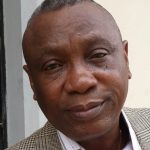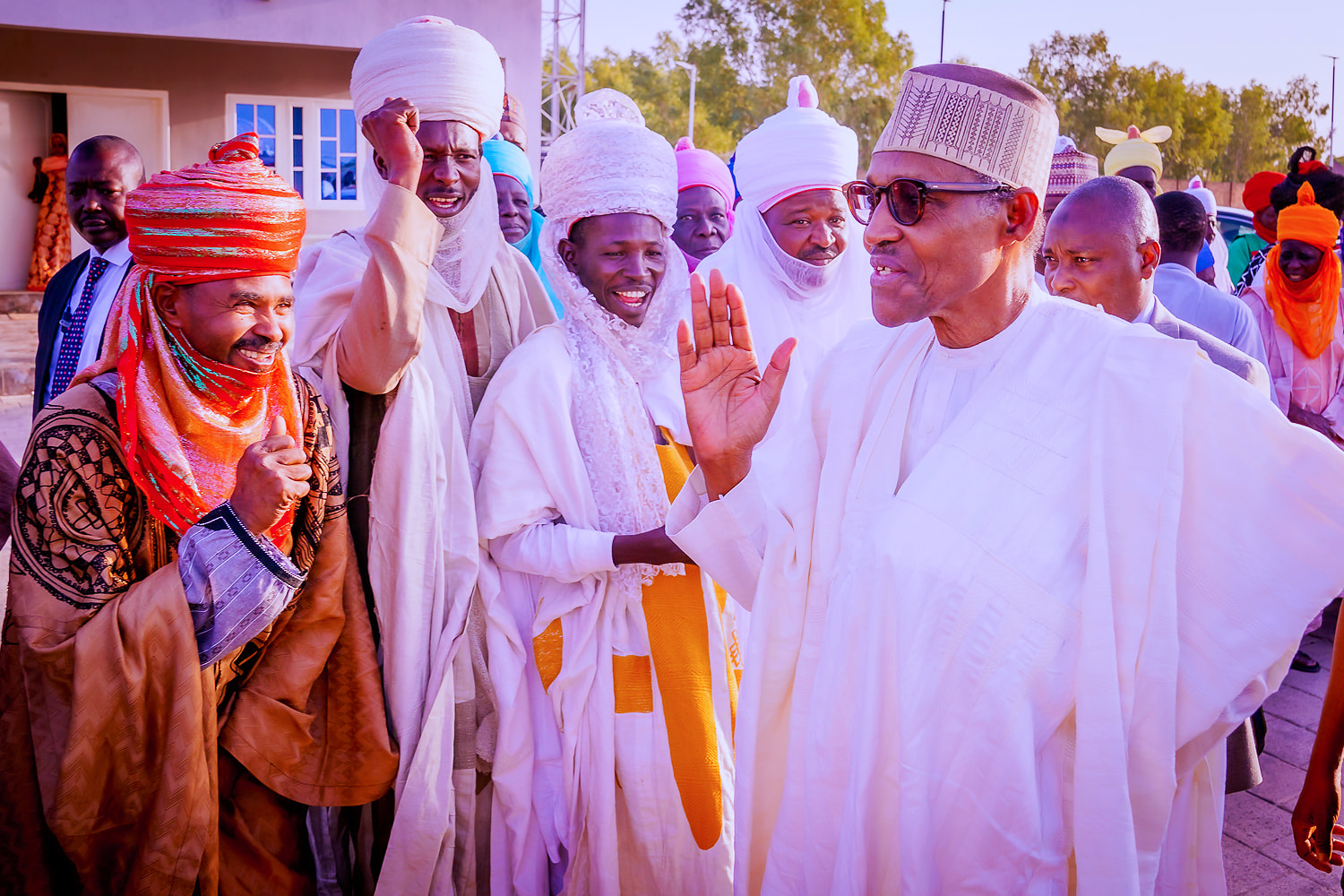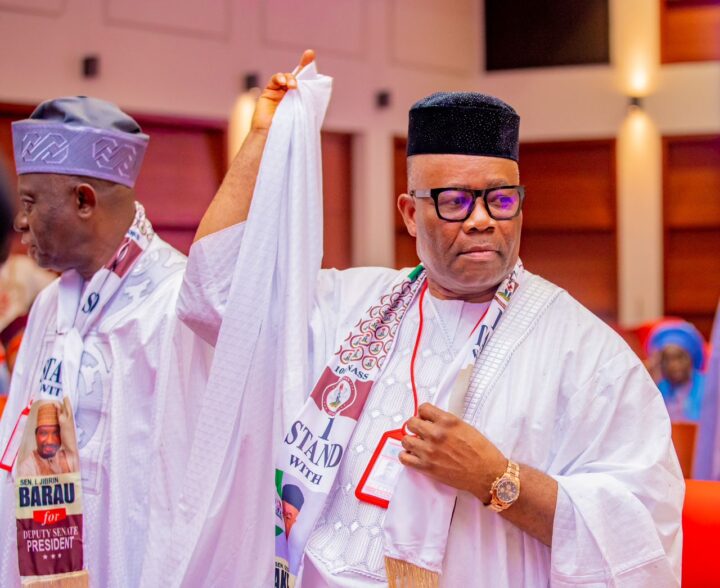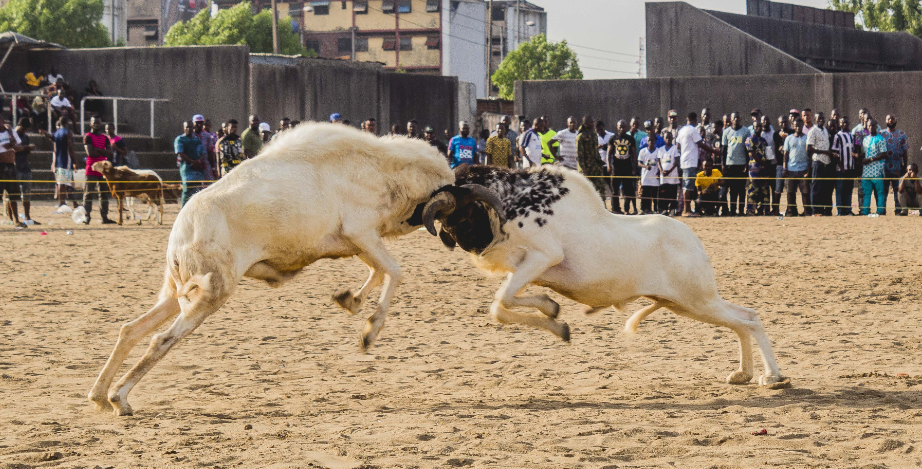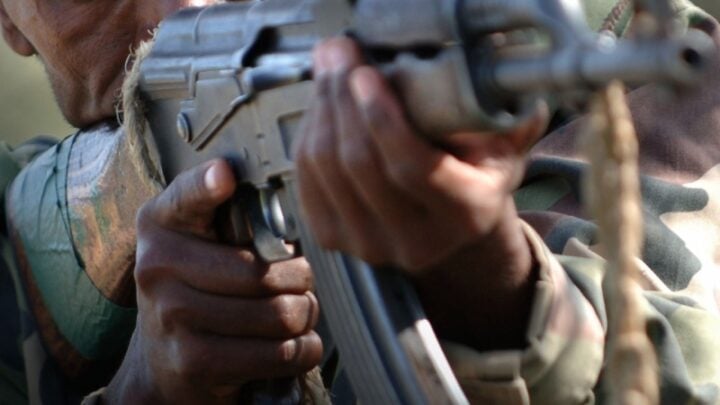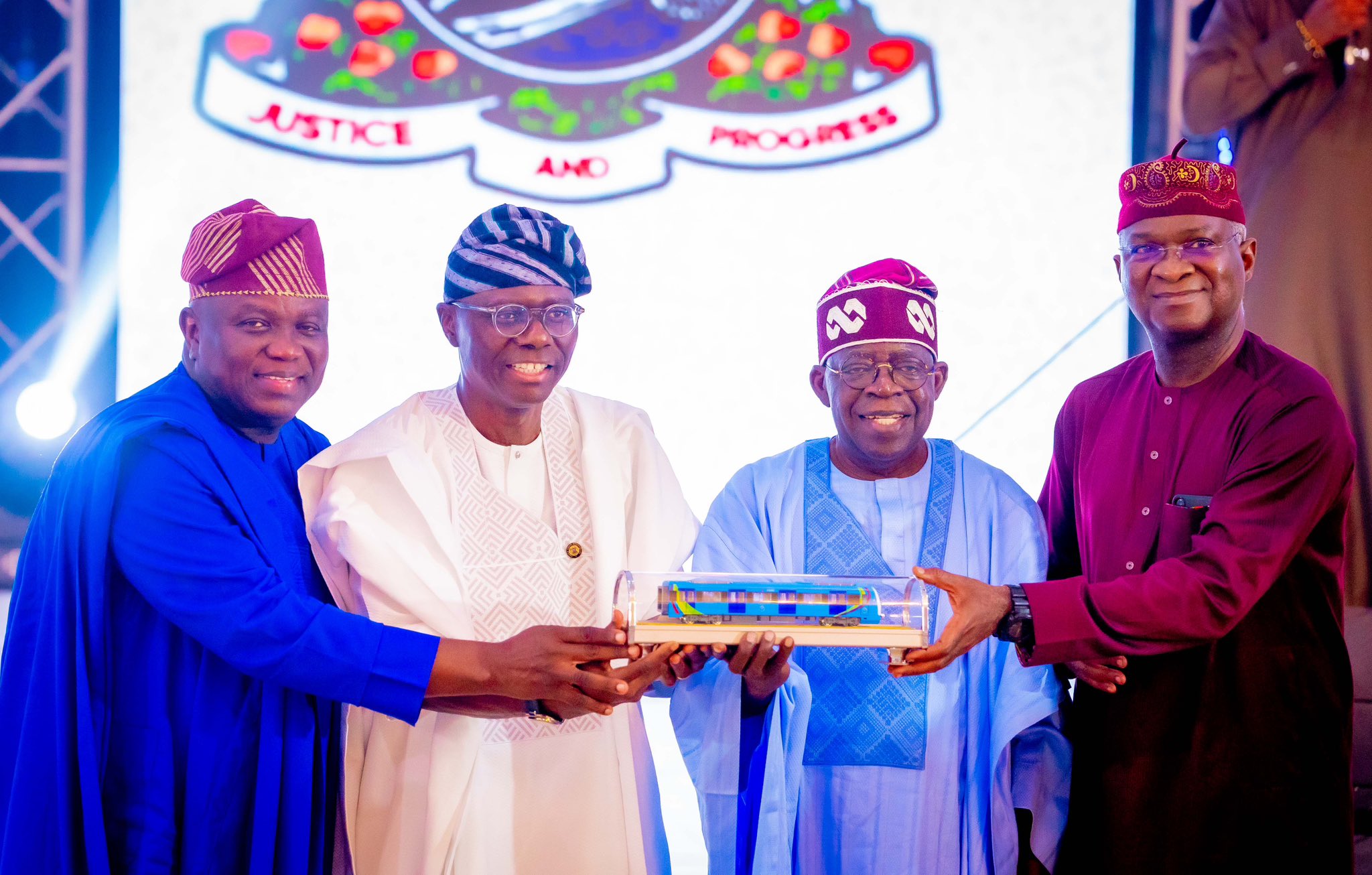While in power, former President Muhammadu Buhari sited the following projects in Daura, his hometown in Katsina state. The Federal Polytechnic Daura, Airforce Reference Hospital, Daura, Women and Children Hospital, Daura, University of Transportation, Daura, Kano-Maradi rail line will pass through Daura, School for People with Special Needs, Nigeria Airforce Response Air Wing, Daura, Nigeria Army 171 Battalion Base, Daura and the Forwarding Operating Base, Daura, National Directorate of Employment Centre in Ganga, upgrade and expansion of Daura Mini-Stadium, Sustainable Development Goals Skills Acquisition Centre on Zango Road.
He also completed the Sabke Dam to supply one million litres of water to Daura and neighbouring communities, several SDG school projects, 73km 132KVA line from Katsina to Daura and two 30 and 40 MVA transformers to boost power supply, dualisation of the 72km Katsina-Daura road, 50-bed maternity centre at the Daura General Hospital built under the name of the First Lady, Sir Emeka Offor E-Library, 400,000 litres capacity solar-powered water system by NNPC and Belema oil in a joint venture with Jack-Rich Tein Foundation, NDE Cosmetology training and distribution of cosmetology packs to 1000 women, and a 330KV /132KV power substation, among others.
He sited these projects in the spirit of nepotism. Since 1999, many of our governors have done the same. Former President Buhari did not take this action because he is a Fulani man. I know of many Fulanis both powerful and ordinary who do not practice the act of nepotism but who are fair, generous, considerate and objective. Former President Buhari did it because he is Muhammadu Buhari. He was not acting the script of any religion or tribe. No Nigerian leader has been worse in terms of nepotism than President Buhari. It is my hope that President Bola Ahmed Tinubu or any future Nigerian leader will not follow his path.
I am always guided by the conclusion of Paul Kenyon, a BBC correspondent, who wrote a book titled ‘Dictatorland — The men who stole Africa’. In the book, he wrote about Nigeria; “this was a vast country of 200 million people, home to 300 tribes jigsawed together by British to create an artificial nation. To many of its inhabitants, Nigeria didn’t exist. There was no such country. The tribes themselves were the nations. The newly drawn borders were just an expression of imperialism. And now all these tribal groups, many of them hostile towards each other, were expected to govern themselves, peacefully and fairly, without the glue of national identity in a federal republic”.
Advertisement
It should be the responsibility of our leaders to find that glue. It is important. Every Nigerian leader must try to promote nationhood. We must all attempt to promote unity in all our actions. There is beauty in unity instead of divisiveness and the burden falls on our leaders to make unity and nationhood their watchwords. No leader must be allowed to promote ethnicity and division. It just does not pay.
Daura is a city with a population of less than 45,000 people. I have visited Daura several times. It is a border post between Nigeria and Niger Republic. Daura is the spiritual home of the Hausa people. The emirate is referred to as one of the “seven true Hausa states” (Hausa Bakwai) because it was, (along with Biram, Kano, Katsina, Zazzau, Gobir, and Rano), ruled by the descendants of Bayajidda’s sons with Daurama and Magira (his first wife). The University of California’s African American Studies Department refers to Daura, as well as Katsina, as having been “ancient seats of Islamic culture and learning”.
Most importantly, Daura has the same identity as Gbadolite and Yamoussoukro. The three are homes of former presidents. I hope Daura will not share the same fate with Gbadolite and Yamoussoukro. I felt sad after watching recently the documentaries on Gbadolite and Yamoussoukro. The two documentaries have been trending on YouTube.
Advertisement
Yamoussoukro, as of the 2014 census, is the fifth most populous city in Cote D’Ivoire; with a population of 355,573 inhabitants. Located 240 kilometers (150 miles) northwest of Abidjan, Yamoussoukro covers 3,500 square kilometres (1,400 sq metres) among rolling hills and plains.
Yamoussoukro became the legal capital of Cote D’Ivoire in 1983, although the former capital Abidjan retains several political functions. Prior to 2011, what is now the district of Yamoussoukro was part of Lacs Region. The district was created in 2011 and is split into the departments of Attiégouakro and Yamoussoukro. In total, the district contains 169 settlements. Yamoussoukro is a sub-prefecture in Yamoussoukro Department and is also a commune. Since 2012, the city of Yamassoukro has been the sole commune in the autonomous district of Yamoussoukro.
In March 1983, President Houphouët-Boigny made Yamoussoukro the political and administrative capital of Cote D’Ivoire as the city was his birthplace. This marked the fourth movement of the country’s capital city in a century. Cote D’Ivoire’s previous capital cities were Grand-Bassam (1893), Bingerville (1900), and Abidjan (1933). The majority of economic activity still takes place in Abidjan, and it is officially designated as the “economic capital” of the country. Félix Houphouët-Boigny, affectionately called Papa Houphouët or Le Vieux (The Old One), was the first president of Cote D’Ivoire who served for more than three decades until his death.
Yamoussoukro is the site of the largest Christian church in the world: The Basilica of Our Lady of Peace, consecrated by Pope John Paul II on September 10, 1990. I visited Yamoussoukro twice, first in 1982 and later in 1986. When I watched the documentary on Yamoussoukro recently, it brought me memories especially the presidential palace now surrounded by the crocodile lake. At present, judging by what I watched in the documentary, there are more than 3,000 crocodiles surrounding the presidential palace today in Yamoussoukro. It is safe to conclude as of now; the glory of Yamoussoukro is gone.
Advertisement
In 1982, I accompanied Joseph Wayas, the senate president between 1979 and 1983 to Gbadolite. The flight from Kinsasha to Gbadolite took us two hours. Kinsasha is a crowded city like Lagos. Gbadolite is the capital of Nord-Ubangi Province in the Democratic Republic of the Congo. The town is located 12 kilometres (7.5 mi) south of the Ubangi River at the border with the Central African Republic and 1,150 kilometres (710 mi) northeast of the national capital, Kinshasa. Gbadolite was the ancestral home and residence of Joseph-Désiré Mobutu, later self-styled as Mobutu Sese Seko, where airports, colleges, malls, supermarkets and libraries were built by the president.
Gbadolite is where Mobutu led the summit that would produce the Gbadolite Declaration, a short-lived ceasefire in the Angolan Civil War in 1989. Mobutu built Gbadolite into a luxurious town often nicknamed “Versailles of the Jungle”. He built a hydroelectric dam on the nearby Ubangi River in Mobayi Mbongo, an international airport, the Gbadolite Airport, which could accommodate a Concorde and three large palaces.
President Mobutu hosted us in Gbadolite. At that time, he built a soft drink factory in Gbadolite. Mobutu also built a nuclear bunker that could house more than 500 people and was the largest in Africa; this was the only nuclear bunker in Central Africa. The bunker was connected to the Ubangui River by a secret tunnel, giving access to the military harbour at the village of N’dangi.
Mobutu Sese Seko Kuku Ngbendu Wa Za Banga (born Joseph-Désiré Mobutu) was the president of the Democratic Republic of the Congo from 1965 to 1971, and later Zaire from 1971 to 1997. He also served as chairman of the Organisation of African Unity from 1967 to 1968. Mobutu was the object of a pervasive cult of personality. During his rule, he amassed a large personal fortune through economic exploitation and corruption, leading some to call his rule a “kleptocracy”. He presided over a period of widespread human rights violations. Under his rule, the nation also suffered from uncontrolled inflation, a large debt, and massive currency devaluations.
Advertisement
In August 1997, Mobutu Sese Seko flew from Gbadolite to Lome, Togo to be a guest of President Gnassingbé Eyadéma, a Togolese military officer and politician who was the president of Togo from 1967 until his death in 2005. And from Lome, President Mobutu flew to Rabat in Morocco. He died on September 7, 1997. His corpse is yet to be exhumed and reburied in the Democratic Republic of Congo—a land he ruled for over 32 years. Democratic Republic of Congo has moved on without Mobutu where the mere mention of his name is now a taboo.
Gbadolite and Yamoussoukro got transformed by the power of the presidency. Now the two towns are like ghost towns. What is happening to the two towns now is a clear example of the futility and vanity of this is our turn syndrome. It happens in some countries of the world, especially in Africa where leaders personalise their offices.
Advertisement
Let us take a look at Iraq whose leader tried to impose his tribe on the other tribes in a united country. Such an attempt is dangerous as it is only very short term. In this part of the world, we call it nepotism and ethnicity. But nepotism itself is corruption. Nepotism refers to granting jobs to one’s relatives in various fields including business, politics, entertainment, sports, religion and other activities. The term originated with the assignment of nephews to important positions by Catholic popes and bishops. Trading parliamentary employment for favours is a modern-day example of nepotism. Criticism of nepotism, however, can be found in ancient Indian texts such as the Kural literature.
Nepotism refers to partiality to family whereas cronyism refers to partiality to a partner or friend. Favouritism, the broadest of the terms, refers to partiality based upon being part of a favoured group, rather than job performance. The term nepotism comes from the Italian word nepotismo, which is based on the Latin word nepos (nephew). Since the Middle Ages and until the late 17th century, some Catholic popes and bishops, who had taken vows of chastity and therefore usually had no legitimate offspring of their own, gave their nephews such positions of preference as were often accorded by fathers to sons.
Advertisement
Several popes according to the papal history elevated nephews and other relatives to the cardinalate. Often, such appointments were a means of continuing a papal “dynasty”. For instance, Pope Callixtus III, head of the Borgia family, made two of his nephews cardinals; one of them, Rodrigo, later used his position as a cardinal as a stepping stone to the papacy, becoming Pope Alexander VI. Alexander then elevated Alessandro Farnese, his mistress’s brother, to cardinal; Farnese would later go on to become Pope Paul III.
Paul III also engaged in nepotism appointing, for instance, two nephews, aged 14 and 16, as cardinals as well as making efforts to increase the territories of his illegitimate son, Pier Luigi Farnese. The practice was finally limited when Pope Innocent XII issued the bull Romanum decet Pontificem, in 1692. The papal bull prohibited popes at all times from bestowing estates, offices, or revenues on any relative, with the exception that one qualified relative (at most) could be made a cardinal.
Advertisement
The ancient Indian philosopher Valluvar condemned nepotism and ethnicity as both evil and unwise. In a larger world, nepotism could be applied to where you favour your tribe more than other tribes. That is enlarging the word in its interpretation.
Iraq has a population of over 40 million people. The country also has over 150 tribes. Some of these tribes include Arabs, Kurds, Chaldeans, Assyrians, Turkmen, Shabakis, Yazidis, Armenians, Mandeans, Circassians and Kawliya.
According to Wikipedia, the Al-Bu Nasir is one of a number of Arab tribes in Iraq. It is a Sunni Arab tribe comprising some 30,000 people who primarily inhabit the town of Tikrit and the surrounding area of north central Iraq, as well as many other areas in the south and centre of Iraq. Although not very numerous, the Al-Bu Nasir nonetheless obtained a reputation of being a difficult lot of people, cunning and secretive, whose poverty drove most of them to pervert the Bedouins’ legendary qualities of being warlike and fearless. Like many Iraqi tribes, it follows the Hanafi fiqh and it traced its origins to the Arabian Peninsula and maintained cordial ties with other related clans and tribes.
The tribe rose to prominence in the 1960s, when one of its members, Ahmed Hassan al-Bakr, seized power in Iraq. Bakr’s successor, Saddam Hussein, was also a member of the Al-Bu Nasir and the tribe became a crucial element of his hold in power from 1979 to 2003. Saddam drew heavily on the tribe to fill the upper echelons of his government and in particular to manage his security apparatus, notably the Intelligence Service and the Special Republican Guard. Most of the key posts in the Iraqi government were held by members of the Beijat clan group and Majid extended family to which Saddam belonged; some elements of the regime’s security apparatus, such as Saddam’s bodyguards, were recruited exclusively from the al-Bu Nasir.
The relatively small size of the tribe was, however, an obstacle to Saddam’s ability to fully “tribalise” the institutions of the Iraqi government. He recruited tens of thousands of supporters, whom he placed in command positions in the Iraqi Army from a number of other tribes allied to the al-Bu Nasir. The resulting network of tribal alliances centred on the al-Bu Nasir and bound to them by payment and patronage, provided the backbone of Saddam’s regime.
Of all the accusations made against General Saddam Hussein none is greater than nepotism and tribalism and it led to his downfall. When his trouble started, his tribe Albu Nasri could not save him. When the Western world led by the Americans waged a war on Iraq, Saddam Hussein was abandoned to his fate by other tribes because he excluded other tribes from his government. He lost out. Iraq lost out too. After Saddam Hussein, Iraq lost its momentum in the Arab world. Leaders must know that nepotism and ethnicity are no longer fashionable in the modern world. It strains growth. It is bad. Very bad.
One of the most important responsibilities of a leader is to promote unity. This does not mean that there is no disagreement or even periodic conflict on the team or within the organisation. To be a unifier, the leader brings people together around a vision, a mission, or a project. Team unity drives results. Babe Ruth said in his paper: “The way a team plays as a whole determines its success. You may have the greatest bunch of individual stars in the world, but if they don’t play together, the club won’t be worth a dime”.
The great calamity that has befallen most African leaders is that they are busy promoting their tribes instead of promoting unity within their countries. And that is why there is no development in African states. Instead of national leaders, all we have are sectional and tribal leaders who promote divisiveness. A leader’s behaviour either promotes unity or division.
Leaders who seek to divide, for whatever reason, may think they will succeed. After all, they are playing to their allies; but in reality, no one admires divisive behaviours and the leader will quickly lose much of their support.
Views expressed by contributors are strictly personal and not of TheCable.
Add a comment
